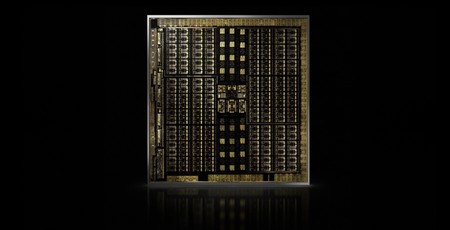
With the critical architectural changes now covered, we can blitz through updates to more classic regions of the GPU, starting with the video and display engine. As you’d expect, the upward trend on higher resolutions, higher refresh rates, and greater bit rates when encoding and decoding all continue with Turing.
The new display engine supports DisplayPort 1.4a, permitting resolutions of 8K to be driven at 60Hz via a single cable. HDMI is still at version 2.0b. High Dynamic Range (HDR) is supported natively, and tone mapping has been added to the HDR pipeline to help approximate the look of HDR images on displays without the required dynamic range.
You can see the new encode and decode capabilities in the slide below.
USB-C and VirtualLink
With DVI now ditched, the HDMI and DisplayPort connectors will be joined by a USB Type-C port. This isn’t just to join the latest trend; it’s mainly there because Turing supports VirtualLink, which is an open standard led by Nvidia, AMD, Oculus, Valve, and Microsoft, that’s seeking to utilise this nifty little connector to deliver the power, video, and data requirements of next-gen VR headsets all at once instead of current practice where three separate cables are required.
VirtualLink has four lanes of DisplayPort High Bit Rate 3 (HBR3) for transmitting video and two lanes of USB 3.1 Gen2 for data transmission (e.g. positioning data). This trumps a traditional USB Type-C headers where you only have the option of four DP HBR3 lanes or a two/two split between those and USB 3.1 Gen 2. Nvidia says power requirements can go up to 35W, a figure that is not included in the TDP of any of the cards.
NVLink for SLI
For SLI users, the High-Bandwidth SLI bridge is no more. Instead, with Turing, Nvidia is bringing NVLink out of the data centre and into the consumer space for the first time.
The top-end TU102, and thus the RTX 2080 Ti, gets two x8 NVLink 2.0 bi-directional links, while TU104 (RTX 2080) gets one, and TU106 (RTX 1070) gets none and thus cannot be used in implicit SLI configurations. Meanwhile, even the RTX 2080 Ti and RTX 2080 are solely limited to two-way SLI. Explicit SLI is still supported over the PCIe 3.0 bus, of course, but remember this requires developer support and optimisation.
NVLink 2.0 offers 25GB/s per direction, so that’s a whopping 100GB/s for TU102 and 50GB/s for TU104 when it comes to sharing data between GPUs. Even the lower figure there is a huge jump compared to the Pascal HB SLI bridge, and enables higher resolution/refresh rate combinations such as 5K at 75Hz or more, 4K Surround at 144Hz, and 8K. Meanwhile, the 100GB/s link enables even 8K Surround multi-monitor configurations.

MSI MPG Velox 100R Chassis Review
October 14 2021 | 15:04

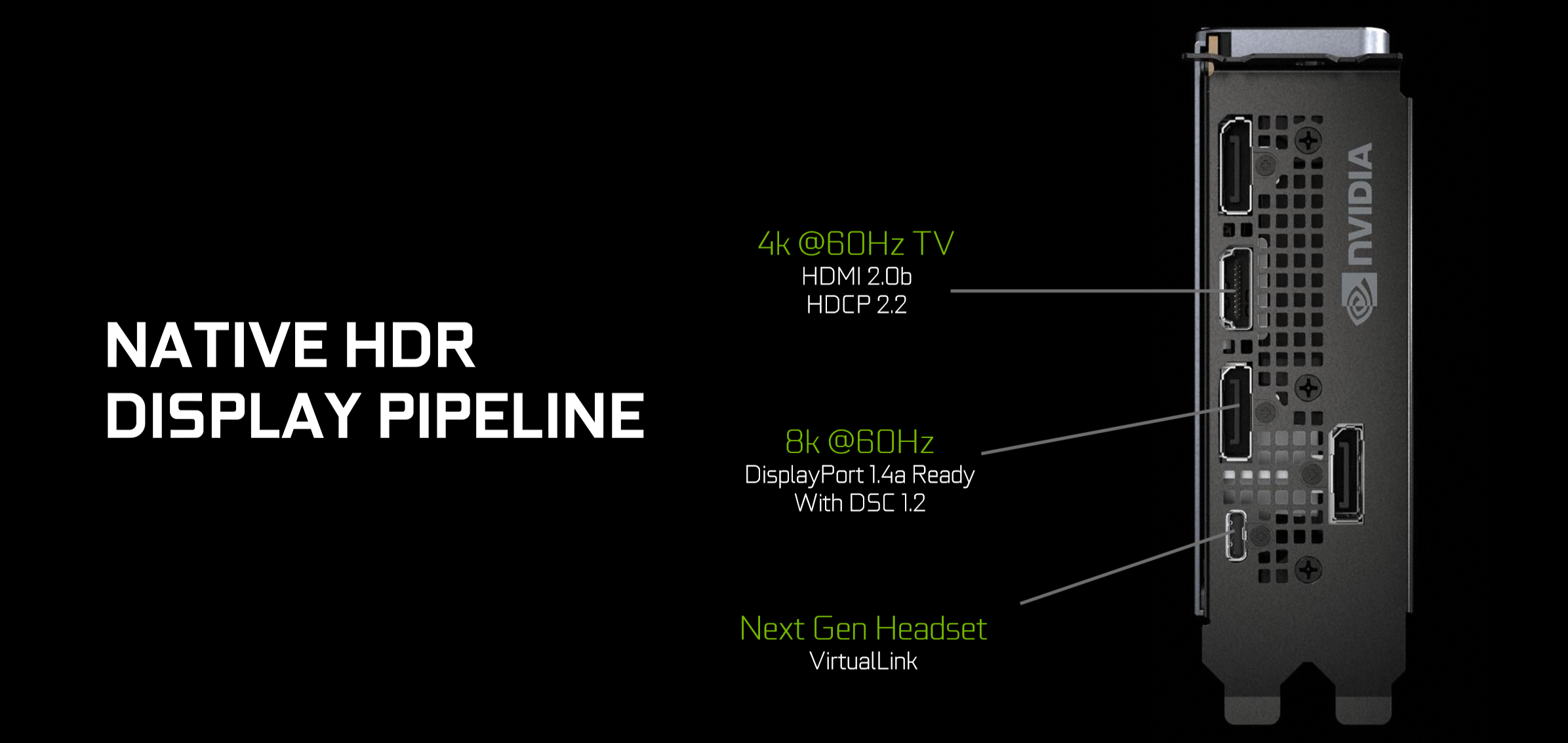
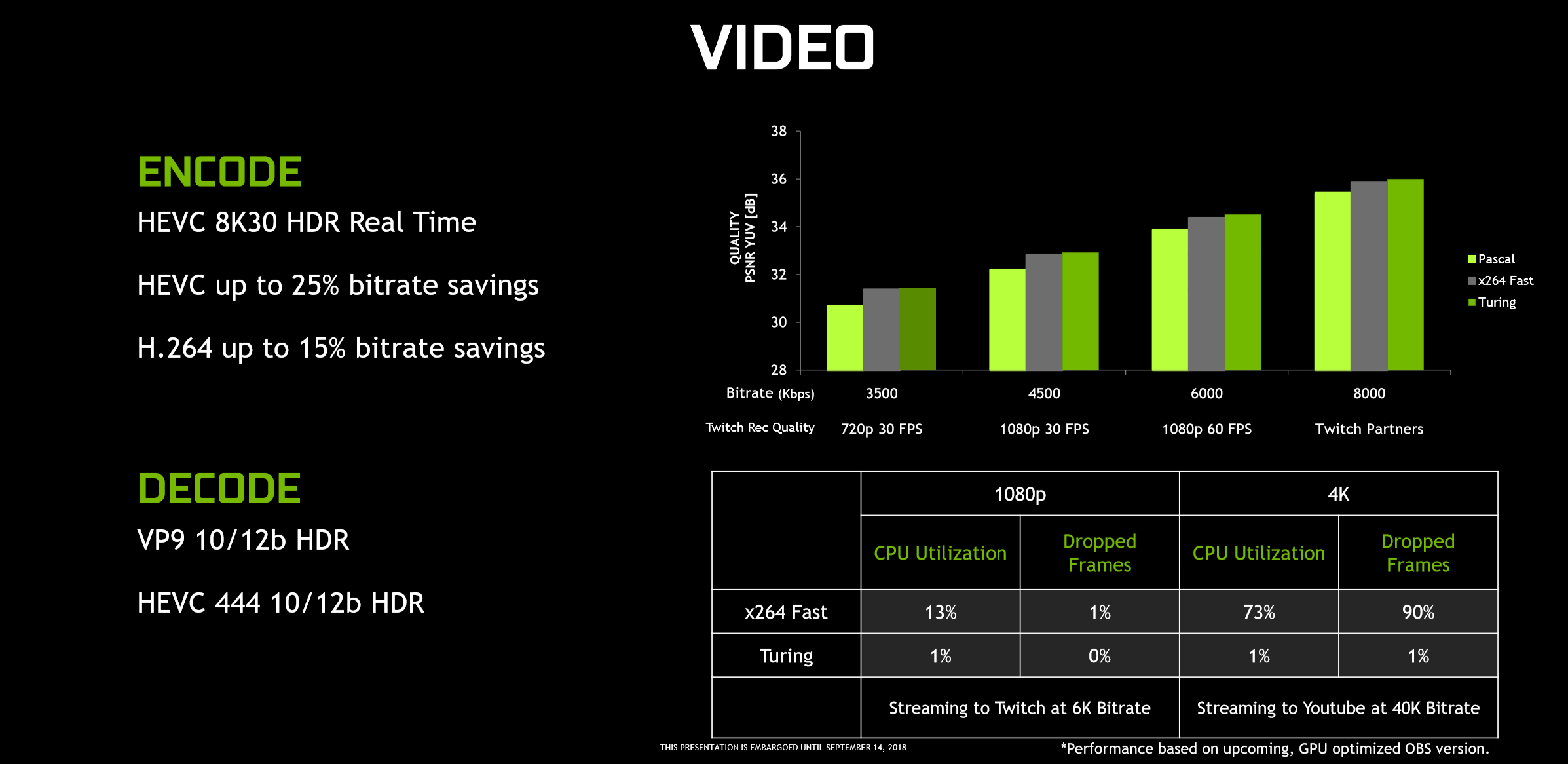
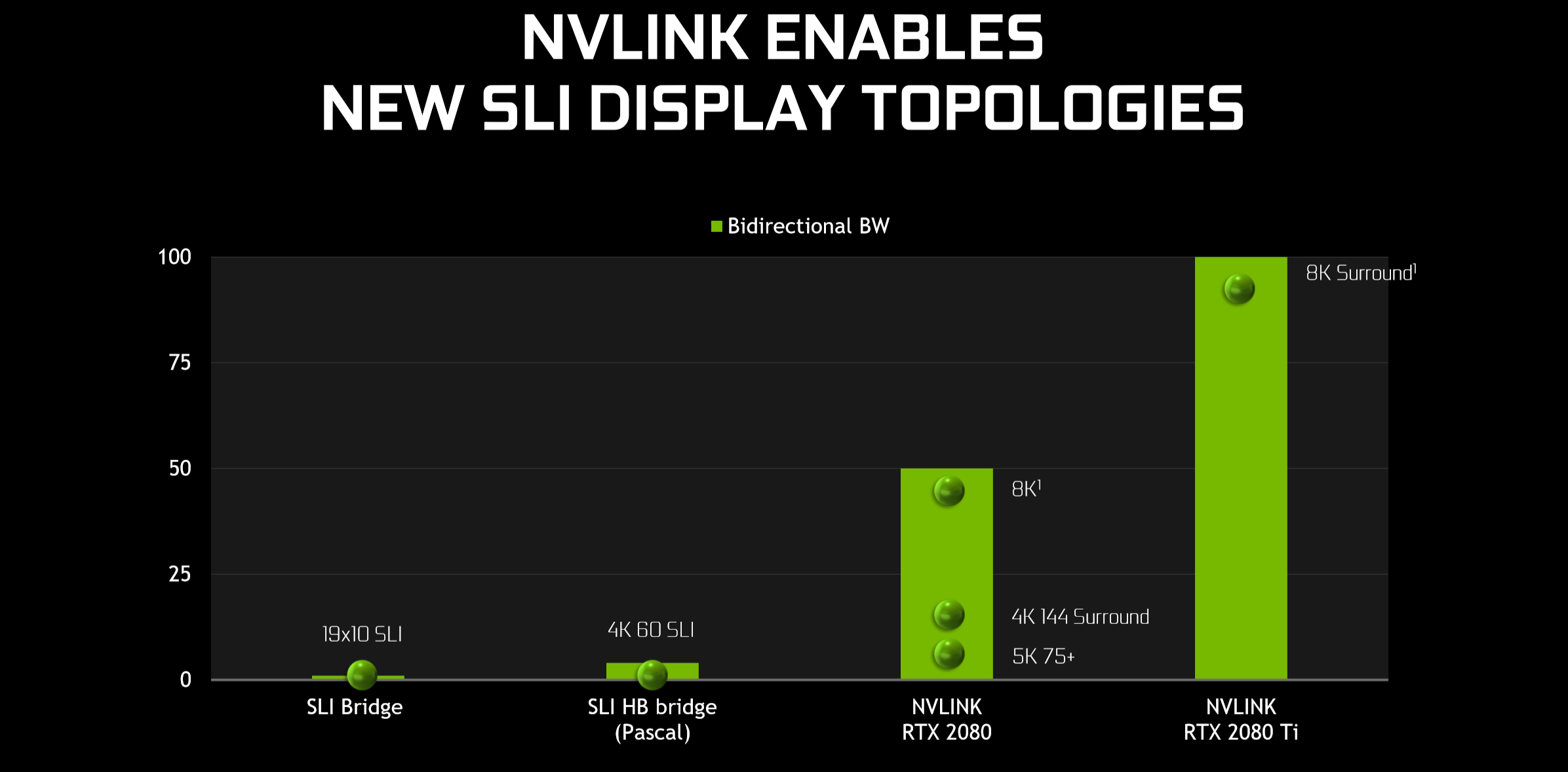
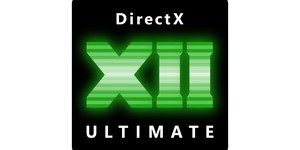

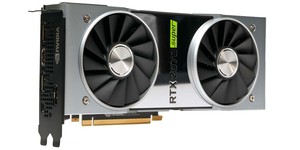




Want to comment? Please log in.